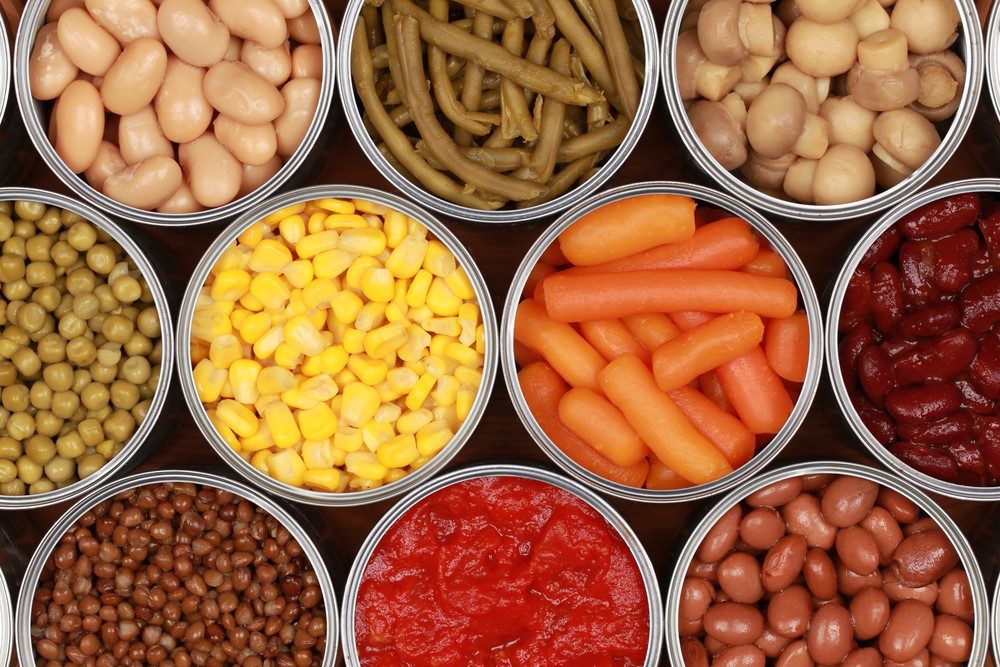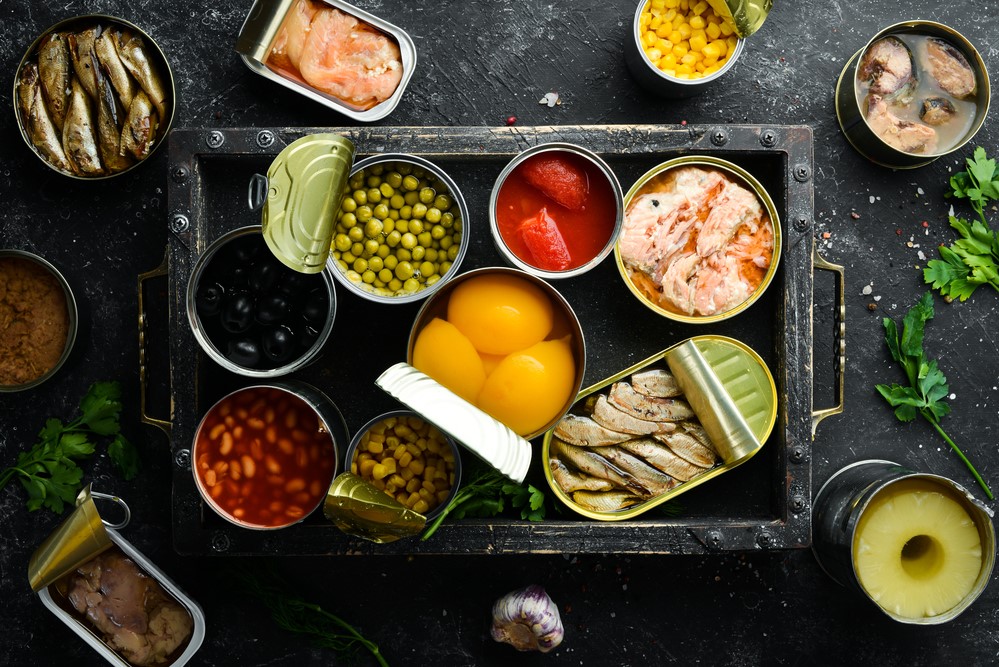- Home
- Blog
- Healthy Cooking
- Cans and tins – can they be good?
Cans and tins – can they be good?
Written by Catherine Saxelby
on Wednesday, 17 November 2021.
Tagged: canned food, healthy cooking, healthy eating, nutrition, wellness

Canned food is convenient, mostly nutritious, inexpensive and your nearest supermarket has a huge selection. It has a long shelf life, needing no preservatives because the canning process itself vacuum-seals and steam-cooks the food under pressure, thus ensuring its safety.
Is it cans? Or tins?
The UK uses the term “tinned”, while the USA tends to use “canned”. Tins are coated or plated with tin, and canned means preserved in cans. So I guess Australia is a bit both ways.
What nutrients are in canned food?
Canned fruits and vegetables have vitamins, particularly vitamin E, folic acid (a B vitamin that plays an important role in making DNA and RNA, as well as helping to produce new cells) and carotenoid nutrients, such as beta-carotene (canned mango) and lycopene (canned tomatoes).
Generally, minerals such as potassium are stable to processing, but may be lost in peeling and other removal steps during processing.
Canned food can be a good source of fibre, which helps to fight constipation and boosts your microbiome. Examples include baked beans and other canned legumes, such as soybeans, chickpeas, kidney beans and lentils; canned fruit; and canned vegetables such as corn and tomatoes.
If salt is a problem for you, look for canned beans, tomatoes and vegetables labelled “no added salt” or “salt reduced”. Most of the salt, however, can be rinsed away. The same applies to sugar. So with fruit canned in syrup. which has more added sugar than fruit sugars, lift the fruit out of the syrup before you eat it. Fruit canned in fruit juice has a similar sugars value but may not always be available.

Easy meals from a can
-
Baked beans, spaghetti or sardines on toast
-
Canned soup with crusty Turkish bread and a side salad
-
Tuna or salmon added to pasta, rice dishes, sandwiches and salads
-
Salad with fresh lettuce, tomato, capsicum and cucumber – mix in a can of corn or asparagus.
Kitchen essentials
If you keep a few cans in your kitchen, you’ll always have the makings of a quick meal. I like to keep these eight handy items in my kitchen:
- Tomatoes, tomato purée
- Fish – tuna, salmon, sardines, crab
- Fruit – pears, pineapple, apricots
- Vegetables – asparagus, beetroot, new potatoes, corn (firmer veg survive the canning process better than soft veg such as green beans)
- Legumes – kidney beans, lentils, chickpeas, three-bean mix, baked beans
- Coconut milk
- Evaporated milk
- Water chestnuts, bamboo shoots (for adding to stir-fries and curries)

Tips about tins
- Don’t buy cans that are dented, blown, rusty or damaged.
- Once the can is open, store the leftovers in the fridge in a sealed container.
- Canned fruit is similar in nutrition value to fresh fruit that has been stewed. Compared to fresh, canned and stewed fruit are lower in heat-sensitive vitamin C, while their fibre, potassium and beta-carotene values remain about the same. The sugar content is higher in canned fruits due to the added sugar.
The bottom line
Canned fruit and vegetables are nutritious. When fresh varieties are out of season, canned is a good option. They are cheaper and have a long shelf life.
Related websites
I like this summary of the history of canned foods from Canned Food UK because it shows cans have been around for more than 200 years – a lot longer than we think!
Foodwatch
The Good Stuff
The Boring Stuff
© 2025 Foodwatch Australia. All rights reserved
Website by Joomstore eCommerce





